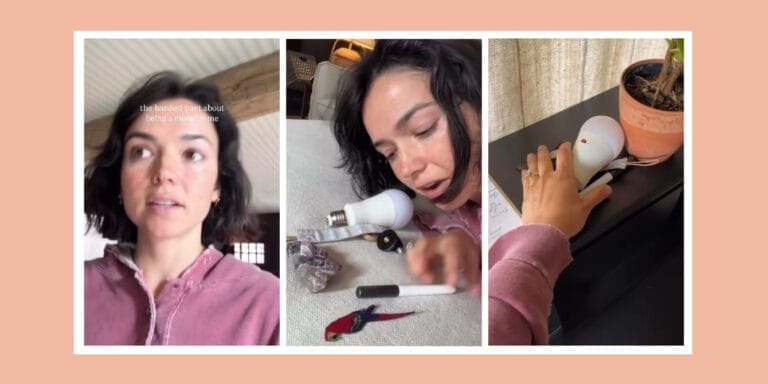2-year-old milestones

Kristen Curette & Daemaine Hines/Stocksy
Your toddler loves pushing buttons at this stage (literally and figuratively!).
We independently select and share the products we love—and may receive a commission if you choose to buy.
Table of Contents
You have a 2-year-old! It’s wild how true the old adage is: The days are long… but the years are short. Happy birthday to your babe, but don’t forget to take the time to celebrate yourself, mama—it’s your second parent anniversary, after all. Your 2-year-old has transformed: From walking and talking even more to expressing some (very) strong opinions about food, fashion and fairness (“mine!”), you’re getting to watch their personality blossom.
By keeping track of what milestones your 2-year-old is working on achieving, you can support their development and consult with your pediatrician if you have any questions or concerns. Here’s what to expect this month.

2-year-old milestones at a glance
Your fully fledged toddler will be adding even more words to their vocabulary, engaging in more imaginative play and taking steps to test the limits of their independence. That may mean tantrums when you guide them back or tell them no, but we’re betting their days are filled with plenty of sweet moments, too. By now, they are likely taking just one midday nap and able to mostly feed themselves. But age 2 is also the time when some kids start to show signs of picky eating. We’ve got tips to help.
Related: What to do when your toddler goes on a food strike
An in-depth look at 2-year milestones
Read on to find out what you need to know about 2-year-old development this month to best support your toddler’s growth.
2-year developmental milestones
Here’s what The American Academy of Pediatrics (AAP) and the Centers for Disease Control and Prevention (CDC) say about 2-year-old milestones.
(Editor’s note: The 2-year milestone guidelines were written to reflect the behaviors that 75% or more of children exhibit at a certain age. Note that milestones are not a perfect metric: It’s key to speak to your pediatrician if you have concerns about your unique child.)
Cognitive
- At 2, your little one can hold an object in one hand while using their other hand, like when taking a lid off
- Your toddler loves pushing buttons (literally and figuratively), and enjoys seeing what happens when they turn that knob or flip that switch on a toy
- Playing with more than one toy at once is another new skill this month, like parking a car in a toy garage
- Your kiddo may say at least two words together, like “More milk”
- They can point to objects in a book when you ask them to find them
- They can name at least two body parts when you ask them to show you
- May nod yes and blow kisses; using gestures for more than just waving and pointing
Motor skills
- Ready for soccer? Your tot can kick a ball
- Your toddler may be able to run—prepare for the chase!
- Many 2-year-olds can now walk up a few stairs by themselves (rather than climbing)
- Your little one can feed themselves with a spoon
Social and emotional
- Your lovebug is becoming more aware of the people around them, and is able to notice when others are hurt or upset. They may pause or look sad themselves when someone is crying
- You’re always your child’s North Star, mama—they’ll look at your face to see how to react in a new situation
Related: How to help little kids process big feelings
Your toddler’s sleep at 2 years
Though they might protest, your 2-year-old still needs one nap during the day and at least 10 hours of consecutive sleep at night, for a combined total of 11 to 14 hours, says the American Academy of Sleep Medicine.
Has your tot tried to climb out of their crib yet? While there’s no specific age for when to transition your toddler to a toddler bed, AAP states that the best time to make the switch is once your child has attempted or learned how to climb out of their crib. That may be between 18 months and 3 years. Though it can be hard to say goodbye to their crib, it’s important to recognize that a fall while climbing out could be hazardous.
To ease the transition, you could start with just their crib mattress on the floor, try a Montessori floor bed or pick out a toddler bed that your little one is excited about. The shift can sometimes take about a week for your kiddo to get used to their new sleeping arrangement. To make it easier, try the following.
Tips to ease the transition to a toddler bed
- Act out the big switch before it happens with stuffed animals, dolls or other figurines
- Start their bedtime routine a little earlier to leave time for extra snuggles
- Gently but firmly guide them back to bed when they inevitably start exploring their newfound freedom
Related: Time for a toddler bed? How to ease the transition
Feeding a 2-year-old
You can most likely count on your toddler to now be able to feed themselves using a spoon, which can make family mealtimes even more fun, as your tot gets to feel like a “big kid”.
As a general guideline, for kids between the ages of 1 and 3, a serving size should be approximately one-quarter of an adult’s, AAP notes.
The AAP recommends the following feeding amounts for 2-year-olds:
- 1 ounce of meat, or 2 to 3 tablespoons of beans
- 1 to 2 tablespoons of vegetables
- 1 to 2 tablespoons of fruit
- 1/4 slice of bread
Though the majority of your child’s nutrients and calories should come from solid food these days, if you’re continuing to breastfeed, aligned with the new AAP guidelines on breastfeeding until at least age 2, we have tips on how to make extended breastfeeding happen—as long as it’s still working for both of you, mama. Cow’s milk is also a good source of protein, vitamins and minerals.
2-year-old not eating: How to help
Picky eating and toddler food strikes are both common at this age, and while those challenges may look a little different for every kid, the primary reason is generally the same (unless related to a feeding issue)—a need for independence.
“It’s pretty normal for a toddler to refuse foods they once liked, or get stuck on wanting the same foods over and over. This has everything to do with their developmental stage,” Jill Castle, MS, RDN, pediatric dietitian and founder of The Nourished Child and advisor to Brainiac Foods tells Motherly in an interview. “Toddlers want to separate from their caregivers and be more independent, yet they aren’t quite ready to go it alone. Hence, the push-pull nature of toddlerhood and the desire to be in charge of their bodies—including what goes in it.”
But it doesn’t have to be a struggle at every mealtime, Castle shares. Try taking the pressure off both of you by just being patient. If you make a big deal about your child not eating, they’ll probably feel even more pressured. “Some kids don’t do well with eating when parents push, cajole and nag them to eat. Rather, staying on a routine of meals and snacks at predictable times and not ‘trying’ to get a child to eat usually results in quicker resolution rather than creating opposition at mealtimes,” she says.
In the end, as long as your child is still on a steady growth trajectory, there’s no real cause for concern. Taking into account what they ate over the course of a week versus one day might help reframe the picture for you, but definitely reach out to your pediatrician with any questions.
Related: Confession: I’m a dietitian and feeding my daughter is a struggle
2-year-old health & growth
Your 2-year-old is back in a stage of rapid growth—those little legs are getting longer, which means they’re getting taller. You likely won’t have to change out their clothing sizes every three months, but you might want to consider sizing up the next time you shop so that they have room to grow—and so they can get a bit more wear out of that cute wardrobe you’ve curated. Your child’s doctor will still chart their height, weight and head circumference at their 2-year well-check, and plot the points along their growth chart.
How much does the average 2-year-old weigh?
According to the CDC and WHO:
- A 2-year-old boy in the 50th percentile weighs 26 pounds, 12 ounces (12.2 kilograms)
- A 2-year-old girl in the 50th percentile weighs 25 pounds, 5 ounces (11.5 kilograms)
How tall is the average 2-year-old?
According to the CDC and WHO:
- A 2-year-old boy in the 50th percentile is 34 ½ inches tall (87.8 cm)
- A 2-year-old girl in the 50th percentile is 34 inches tall (86.4 cm)
Activities for 2-year-olds
From creating an obstacle course in your home or backyard to role playing (barista, anyone?), age 2 is a sweet time to engage in more interactive, imaginative play with your little one.
Obstacle course: Try setting up an obstacle course in your play area or backyard, and see if they’ll follow you through or be excited about you watching them run it on their own. Crawling over cushions, scooting under tables, balancing on beams and jumping over sticks is a great way to engage their gross motor skills.
Sensory play: Now that your kiddo is over 18 months, sensory bins can help them explore a wide variety of textures, colors and tactile sensations. Try filling a large but shallow bin or baking pan with dried black beans, rice or kinetic sand, and then incorporate a few of their favorite toys into the mix, too, like mini metal cars or trucks for digging or items found in nature to discover, like pinecones, acorns and flowers.
Coffee shop: If your tot knows how important your morning coffee or tea is, it could be cute to act out the ritual with them in pint-size form. Set up a tiny barista counter, and help them pretend to “make” coffee to serve you. You can order from a menu and pay at the cash register, too, all in the name of play.
Our favorite products for 2-year-olds
A version of this story was originally published on May 14, 2023. It has been updated.






































